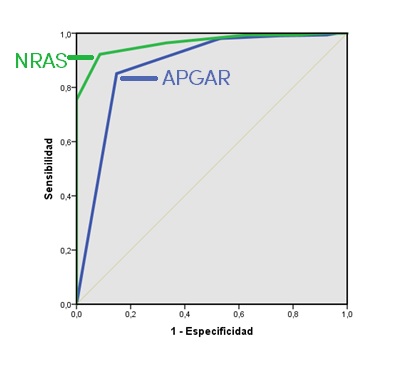Valoración de no inferioridad del Score de “reanimación y adaptación neonatal” frente al puntaje de Apgar Artículo Original
Contenido principal del artículo
Resumen
Introducción: La evaluación de la transición desde el medio intrauterino en los recién nacidos se realiza con el puntaje de Apgar (1953), proporciona una evaluación rápida del estado clínico, sin embargo, contiene variables subjetivas en su calificación. El nuevo puntaje de Reanimación y Adaptación Neonatal incorpora intervenciones de la reanimación neonatal. El objetivo fue demostrar la no inferioridad del nuevo puntaje frente al de Apgar.
Métodos: Se realizó un estudio observacional, descriptivo de corte transversal que empleó simultáneamente las dos puntuaciones. Con una muestra de 396 neonatos. El análisis univarial usó frecuencias absolutas y relativas y el bivarial usó Curvas ROC para la exactitud diagnóstica y pruebas significancia estadística.
Resultados: La necesidad de reanimación fue del 35,6%, de ventilación mecánica del 19,6% y el diagnóstico de asfixia del 22%. La Curva ROC que examinó la variable asfixia mostró un índice de Youden a favor del nuevo puntaje, en el primer y quinto minuto, con similares resultados en las variables ventilación mecánica y reanimación neonatal.
Conclusión: el puntaje de Reanimación y Adaptación Neonatal no es inferior al de Apgar en la valoración de asfixia. Al igual que su predecesor reconoce la necesidad de reanimación así como la necesidad de ventilación mecánica en los neonatos con puntuaciones bajas. Es una nueva herramienta de fácil aplicación y comprensión para la determinación del estado de transición en los recién nacidos.
Descargas
Detalles del artículo

Esta obra está bajo una licencia internacional Creative Commons Atribución-NoComercial-SinDerivadas 4.0.

